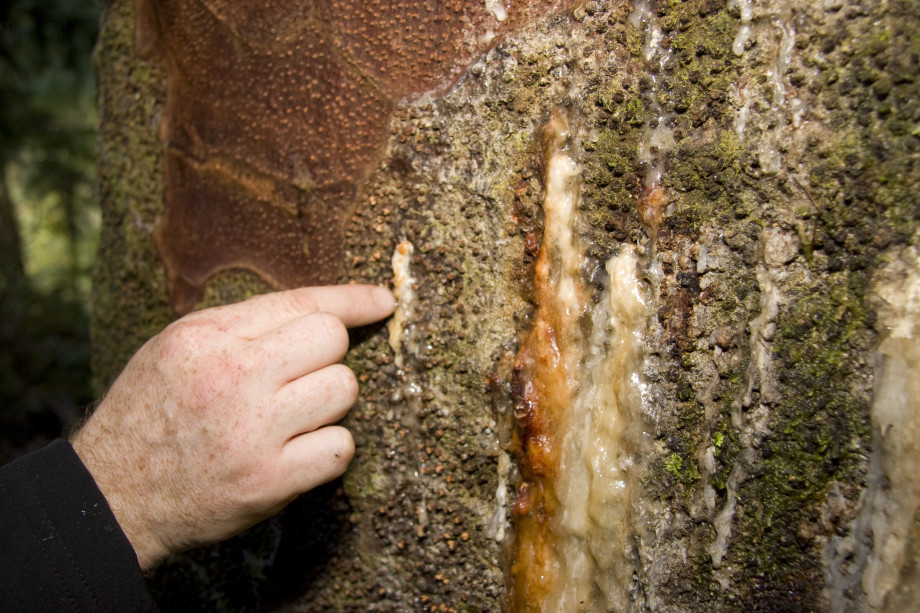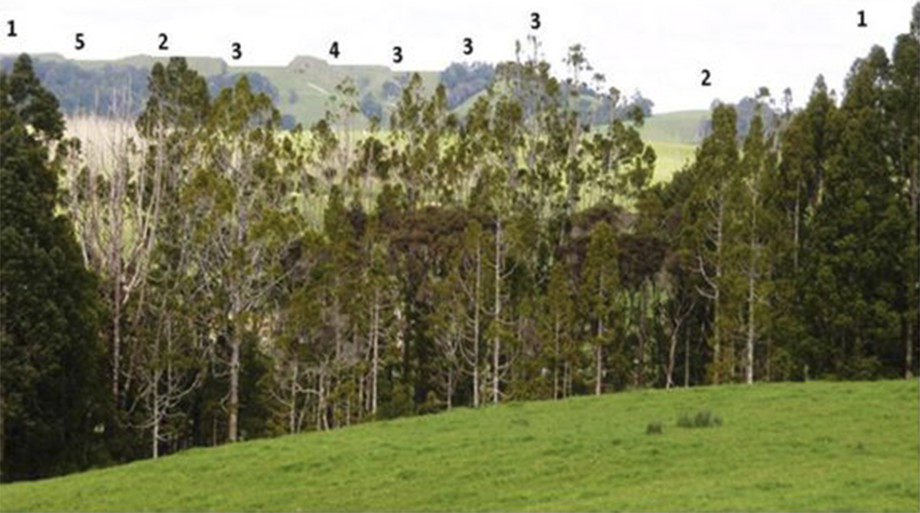Reporting a sick-looking kauri helps us understand where the PA pathogen is.
Report about ""Going into a Kauri forest?
We can all help to protect Kauri by following correct hygiene protocols when we go into Kauri forests.
Assessing Kauri trees for symptoms of kauri dieback disease is critical for the Kauri Protection programme, so we can improve our understanding of where the PA pathogen is. The most common symptoms associated with the disease are listed below.
The survival of Kauri depends on all of us taking actions to protect Kauri and reduce the spread of the PA pathogen. If you see a Kauri with any of these symptoms, please report it.
1. Bleeding gum
Basal trunk lesions. Not all infected trees show a trunk lesion, and not all trunk lesions are caused by kauri dieback disease.

2. Yellowing of leaves
Kauri tree leaves could turn yellow as the disease takes effect.

3. Thinning canopy
The PA pathogen starves Kauri by preventing the movement of water and nutrients throughout the tree, which leads to the canopy eventually being reduced or thinning over time. The degree of thinning can vary. The below photo compares healthy Kauri crowns to Kauri suffering from severe kauri dieback disease, to a dead Kauri.
- Healthy crown – no visible signs of kauri dieback disease
- Canopy thinning
- Thinning & some branch dieback
- Severe dieback
- Dead

4. Dead branches
Trees showing severe disease-like symptoms such as a thin canopy and dead branches.
The last stage of the disease is death of the tree itself, where there is no canopy of the tree. Most trees infected with the PA pathogen will eventually die.

Report a sick kauri
